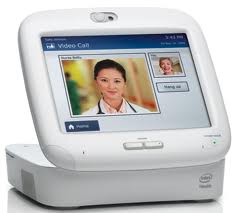

Telehealth for cardio patients helps to reduce costs, admission rates and length of stay, according to a study appearing in the Journal of the Medical Internet Research.

The study took place at the Telehealth Center at the National Taiwan University Hospital, where the following telehealth services have been offered since 2009: instant transmission of blood pressure, pulse rate, electrocardiography, oximetry, and glucometry for analysis, mutual telephone communication and health promotion, and continuous analytical and decision-making support. According to the research team, between November 2009 and April 2010, patients with cardiovascular diseases who received telehealth service at NTUH were recruited, and their data on hospital visits and health expenditures was collected, for the six month period both before and after receiving telehealth care.
Out of 141 patients, the telehealth intervention significantly reduced admission rates per month per person for non-seniors and seniors alike. Telehealth intervention reduced inpatient cost per month in the non-senior group from $814.93 to $217.39, and reduced costs in the senior group from $954.78 to $485.06.
“In our clinical investigation, a real-time telehealth service based on the combination of information technology and rapid-response hospital services improved clinical outcomes, decreased admission rates, and shortened the duration of all-cause hospital stays for cardiovascular disease patients younger than 65 years as well as patients older than 65 years,” the researchers wrote. “The telehealth service also provided cost savings by decreasing the expenses of inpatient and total cost of all-cause healthcare in patients younger than 65 years and in those patients older than 65 years.”

Telehealth continues to boost care and decrease costs across the spectrum of healthcare services. For instance, videoconferencing was determined to be valuable in allowing family and other caregivers to be part of interdisciplinary team meetings to plan hospice care, in a study recently published in the journal Telemedine and e-Health.
A study published last spring in the journal Circulation, meanwhile, found remote monitoring to be an effective in way to reduce emergency room visits for heart failure patients with implantable defibrillators. Additionally, research unveiled last year by Geisinger Health Plan, found that telemonitoring using interactive voice response resulted in a 44 percent reduction in readmissions of patients with congestive heart failure.
Be a part of Elets Collaborative Initiatives. Join Us for Upcoming Events and explore business opportunities. Like us on Facebook , connect with us on LinkedIn and follow us on Twitter , Instagram.












